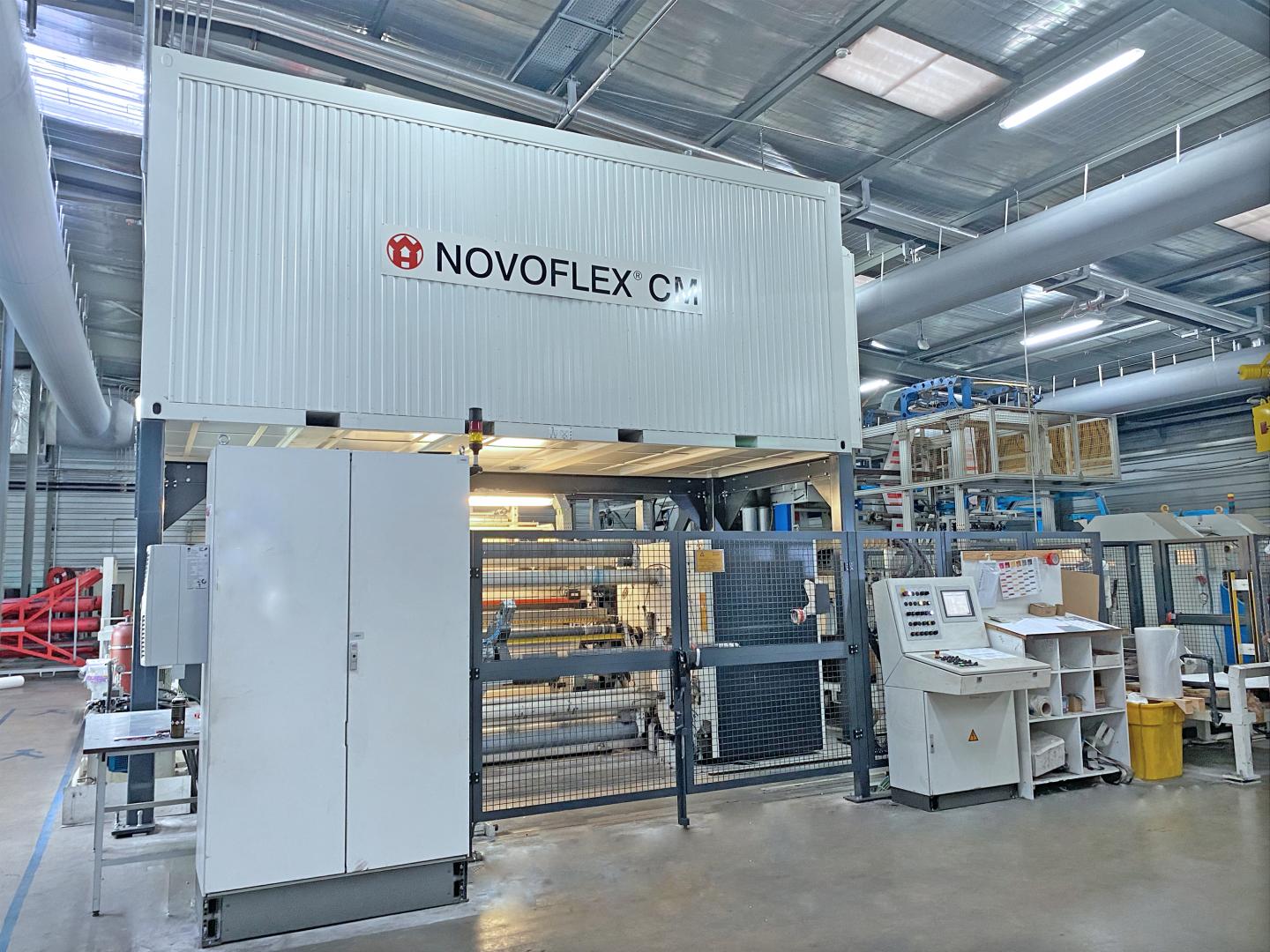Eco-Friendly Practices: Driving Modification with Bulk Container Recycling
Wiki Article
Efficient Industrial Recycling Solutions for Sustainable Product Packaging: A Comprehensive Overview
That's where this comprehensive guide on effective commercial recycling options for sustainable packaging comes in. By discovering crucial areas such as packaging product selection, developing for recyclability, executing reusing facilities, teaming up with recycling companions, and tracking and gauging recycling success, this overview will certainly outfit you with the expertise and tools necessary to make educated choices and drive favorable modification within your organization. Whether you're a packaging specialist, sustainability supervisor, or simply interested in the topic, this overview will provide beneficial insights and strategies to assist you browse the world of sustainable product packaging.Packaging Product Choice
The choice of product packaging materials plays an essential function in ensuring the sustainability of industrial reusing remedies. The choice of products is crucial in minimizing ecological impact and making the most of reusing efficiency when it comes to sustainable product packaging. Choosing the right products can aid minimize waste generation, preserve sources, and promote a circular economic climate.One essential variable to consider in product packaging material choice is recyclability - bulk container recycling. Products that can be easily reused and included back into the manufacturing cycle are chosen. As an example, products like cardboard, paper, glass, and certain kinds of plastics can be recycled numerous times without losing their high quality. On the other hand, materials that are difficult to recycle, such as mixed plastics or non-recyclable compounds, can produce difficulties for the recycling procedure and may wind up in incinerators or land fills.
One more factor to consider is the use of eco-friendly and biodegradable products. Packaging made from renewable sources, such as plant-based plastics or biopolymers, can help reduce reliance on nonrenewable fuel sources and reduce climate modification. Additionally, biodegradable products break down normally with time, decreasing the build-up of waste in land fills.
Moreover, the weight and volume of packaging materials must be reduced to reduce transportation prices and power usage. Light-weight materials not only require less sources during production yet additionally add to reduce carbon exhausts during transportation.
Creating for Recyclability
In order to guarantee the recyclability of product packaging products, thoughtful layout is essential. Creating for recyclability includes developing product packaging that can be quickly sorted, divided, and refined in recycling facilities. One essential element of designing for recyclability is the selection of products. Product packaging designers must prioritize the usage of products that are extensively accepted for recycling and have actually established reusing facilities. Products such as glass, aluminum, and particular sorts of plastic, like animal and HDPE, are frequently reused and ought to be preferred over products that are costly or difficult to reuse.An additional important consideration in creating for recyclability is the removal of unnecessary components or products. By lessening the number of layers, finishes, and extra elements, packaging can be made less complex and easier to recycle. In addition, designers ought to intend to lower using blended products, as they can make complex the reusing procedure.

Implementing Recycling Infrastructure
Effective execution of reusing framework is important for the success of commercial reusing services. Without proper infrastructure in position, the recycling process becomes inefficient and inefficient, impeding the overall goal of sustainable packaging.To carry out reusing infrastructure effectively, several essential aspects require to be considered. There ought to be an efficient collection system that promotes the separation and collection of recyclable products. This can include marked reusing bins in public areas, in addition to collaborations with waste administration firms for curbside pick-up and sorting.
Once accumulated, the recyclable products need to be carried to recycling facilities in a prompt fashion. This requires effective logistics and transport networks, making sure that the products reach the proper facilities right away.
At the reusing centers, progressed sorting and handling modern technologies ought to remain in place to divide various kinds of products efficiently. This consists of making use of automated arranging equipments, optical scanners, and hands-on sorting techniques.
Furthermore, there should be a durable market demand for recycled products. This can be achieved with cooperations with suppliers and markets that utilize recycled products in their manufacturing processes. Creating a stable market for recycled products incentivizes the recycling industry and advertises the circular economy.
Working Together With Recycling Partners

One secret element of teaming up with recycling companions is the establishment of clear communication networks. It is very important to establish open lines of communication to help with the exchange of information, updates, and responses. This enables both celebrations to stay notified concerning the progress of recycling campaigns and resolve any difficulties or issues that might occur.
In addition, collaboration can involve joint initiatives in creating and implementing reusing programs. Reusing partners can supply useful insights and advice in creating efficient collection systems and figuring out one of the most suitable recycling innovations. By interacting, companies and reusing companions can optimize the reusing procedure and lessen waste.
Additionally, collaboration can expand past the functional facets of recycling. It can also encompass advocacy and education efforts. By joining forces, companies and recycling companions can increase understanding regarding the value of reusing and advertise the adoption of sustainable product packaging practices amongst customers and other stakeholders.
Monitoring and Measuring Recycling Success
To make sure the efficiency of industrial recycling remedies and the achievement of sustainable product packaging objectives, it is critical for companies and their recycling companions to develop a industrial metal packaging detailed system for tracking and gauging reusing success (processing company). Determining and tracking reusing success permits companies to analyze the impact of their reusing efforts, determine locations for renovation, and set meaningful targets for future developmentOne means to track reusing success is via using information collection and evaluation devices. By collecting information on the amount of product packaging waste generated, the percentage of waste that is recycled, and the sorts of products being reused, organizations can acquire beneficial understandings into their recycling performance. This data can after that be examined to determine patterns, patterns, and areas of ineffectiveness.
Another crucial facet of tracking and gauging reusing success is developing standardized and clear metrics. This enables organizations to contrast their efficiency against market benchmarks and track their progress gradually. Metrics such as reusing rates, waste diversion rates, and greenhouse gas exhausts can provide a measurable measure of a company's reusing success.

Final Thought
In final thought, carrying out efficient commercial recycling options for lasting packaging calls for mindful consideration of product packaging material selection, designing for recyclability, applying reusing facilities, collaborating with reusing partners, and monitoring and gauging recycling success. By incorporating these techniques, businesses can contribute to an extra sustainable and environmentally-friendly approach to packaging, reducing waste and advertising the round economic climate.By checking out vital areas such as packaging material option, making for recyclability, implementing reusing framework, collaborating with reusing partners, and monitoring and determining recycling success, this overview will equip you with the knowledge and tools required to make educated decisions and drive favorable change within your company. Packaging designers ought to prioritize the usage of materials that are extensively accepted for reusing and have developed recycling infrastructures.Collaboration with recycling companions is necessary for the effective implementation of industrial reusing remedies and the achievement of lasting packaging goals. By joining pressures, services and reusing companions can increase recognition concerning the relevance of recycling and advertise the adoption of lasting product packaging methods among customers and other stakeholders.
By collecting data on the amount of product packaging waste produced, the portion of waste that is reused, and the kinds of materials being reused, companies can gain valuable insights right into their reusing efficiency.
Report this wiki page